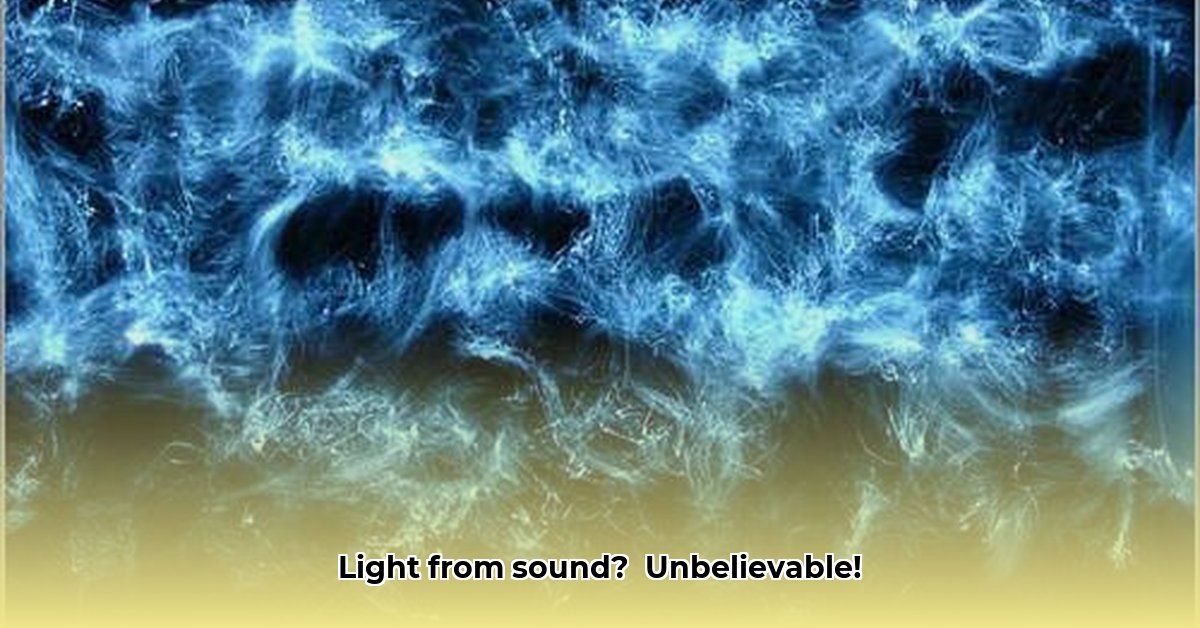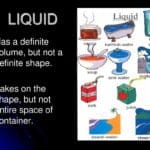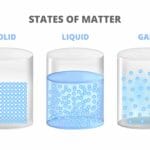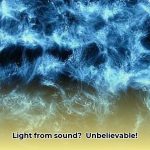Imagine generating light by harnessing the power of sound waves within a liquid. This is sonoluminescence, a phenomenon that continues to intrigue scientists and spark imaginations. For more on the power of sound, check out this article on sound frequencies. This exploration delves into the intricacies of this fascinating process, illuminating its underlying mechanisms, persistent mysteries, and the ongoing efforts to unlock its full potential. We’ll examine the various types of sonoluminescence, explore the leading theories behind light production, and address the challenges of accurately measuring the extreme temperatures generated within these fleeting, light-emitting bubbles. Consider this a scientific quest, where physics and chemistry intertwine to reveal the secrets hidden within this captivating phenomenon. Prepare to embark on a journey into the world of sonoluminescence, where sound transforms into light, offering surprising insights and hinting at future technological advancements.
Decoding Sonoluminescence: Unraveling the Mechanisms of Sound-Induced Light Emission
Sonoluminescence, the emission of light from imploding bubbles induced by sound waves in a liquid, is a phenomenon that continues to captivate and perplex scientists. The field remains ripe with unanswered questions, ongoing debates, and the promise of transformative applications. What are the fundamental aspects that make sonoluminescence so remarkable?
Multi-Bubble vs. Single-Bubble Sonoluminescence: Two Distinct Forms of Acoustic Cavitation
Sonoluminescence manifests primarily in two forms: multi-bubble sonoluminescence (MBSL) and single-bubble sonoluminescence (SBSL). MBSL is characterized by a multitude of bubbles collapsing simultaneously, creating a diffuse, widespread glow, reminiscent of a miniature underwater fireworks display. In contrast, SBSL involves the precise control and manipulation of a single bubble, which collapses and emits a brief, intense flash of light. The stability and predictability of SBSL provide researchers with a unique opportunity to investigate the phenomenon under controlled conditions, enabling precise measurements and isolation of key variables for more accurate data acquisition.
Probing Extreme Temperatures: Measuring the Heat Within Imploding Bubbles
Determining the temperature reached during bubble collapse stands as one of the most significant challenges in sonoluminescence research. Estimates vary widely, ranging from several thousand degrees Celsius to millions of degrees Celsius, rivaling the temperature at the sun’s core. The extremely short duration of the light emission event, occurring on the order of picoseconds, coupled with the microscopic size of the bubble, makes accurate temperature measurements exceptionally difficult. Researchers employ a variety of techniques and experimental setups, yielding a range of results and highlighting the need for further methodological refinements and innovative approaches.
Hotspot Theory and Beyond: Investigating the Mechanisms of Acoustic Cavitation
Several theoretical models attempt to explain the underlying mechanisms of sonoluminescence. The most prevalent is the “hotspot” theory, which proposes that the energy of the imploding bubble is concentrated into a minuscule, extremely hot region, leading to the emission of light. Alternative theories include bremsstrahlung radiation, resulting from the deceleration of charged particles, and collision-induced radiation, where light is generated through interatomic collisions within the collapsing bubble. While each theory offers insights into the process, none fully accounts for all observed phenomena. Reconciling these competing theories into a unified understanding of sonoluminescence remains a central goal of ongoing research.
The composition of the gas within the bubble also significantly affects the process. Noble gases, such as argon and xenon, are known to enhance the intensity of the emitted light, suggesting a critical role in the energy conversion process. The precise mechanisms by which different gases influence sonoluminescence are still under investigation.
Potential Medical Applications: Exploring the Therapeutic Potential of Sound-Generated Light
The fascination with sonoluminescence extends beyond pure scientific curiosity, driven by the potential for transformative applications across diverse fields. Envisioning the use of sonoluminescence in super-resolution medical imaging, the development of highly efficient lighting technologies, and the creation of novel materials through the utilization of intense heat are just a few examples of the possibilities. What specific medical advancements could arise from this technology, such as improved diagnostics and targeted therapies?
Scaling sonoluminescence from laboratory experiments to practical, real-world applications presents significant challenges. Achieving a level of reliability and efficiency necessary for widespread adoption requires optimizing the process and addressing safety concerns, including biocompatibility issues in medical applications.
Current Research and Future Directions: Charting the Course of Sound and Light
Sonoluminescence research is a dynamic and evolving field, with scientists around the globe working to unravel its remaining mysteries and unlock its vast potential. Several key areas demand further attention:
- Refining Temperature Measurement Techniques: Developing more precise and accurate methods for measuring the temperature within the imploding bubble is essential. Achieving these measurements at picosecond resolution and nanometer scales represents a significant technological hurdle.
- Developing Advanced Theoretical Models: Creating sophisticated computer models capable of accurately simulating the complex physical processes involved in sonoluminescence is crucial for gaining a deeper understanding of the phenomenon. What level of detail is required in these models to accurately capture all the relevant physical phenomena?
- Unlocking the Full Potential: Researchers anticipate harnessing the extreme temperatures and unique properties of the light emitted during sonoluminescence for innovative technologies in medicine, materials science, and other fields. How can the unique properties of sonoluminescence be used in materials synthesis, targeted drug delivery, and other cutting-edge applications?
The following table summarizes the current research landscape and outlines the short-term and long-term goals of key stakeholders:
| Stakeholder | Short-Term Goals (0-1 year) | Long-Term Goals (3-5 years) |
|---|---|---|
| Researchers | Refining temperature measurement techniques; testing competing theories; developing more sophisticated computational models; exploring the effects of different liquid and gas compositions. | Achieving a comprehensive theoretical model that accurately predicts sonoluminescence behavior; exploring and developing medical and drug delivery applications; investigating high-energy plasma applications for energy production or materials processing. |
| Developers | Investigating potential applications in advanced lighting, high-resolution medical imaging, and non-destructive testing; developing prototype sonoluminescence devices for specific applications. | Developing efficient, compact, and reliable sonoluminescence devices for commercial applications; exploring uses in advanced material processing, chemical synthesis, and environmental remediation; scaling up sonoluminescence technology for industrial applications. |
| Funding Organizations | Prioritizing grants that address fundamental mechanistic uncertainties; encouraging interdisciplinary collaboration among physicists, chemists, engineers, and medical researchers; supporting the development of new experimental techniques and computational tools. | Supporting fundamental research into the basic science of sonoluminescence; promoting translational research focused on developing practical applications; establishing research centers dedicated to sonoluminescence research and development; fostering public-private partnerships to accelerate the commercialization of sonoluminescence technologies. |
The quest to fully understand sonoluminescence and harness its potential is an ongoing journey, emblematic of the spirit of scientific inquiry. It exemplifies how seemingly simple interactions can lead to remarkable phenomena, potentially leading to technological innovations that are only now being conceived.
Reconciling Conflicting Temperature Estimates in Sonoluminescence Research
Pinpointing the temperature within the collapsing bubble remains a significant challenge in sonoluminescence (SL) research, where sound waves produce light. Numerous confounding factors contribute to this scientific puzzle, leading to measurement discrepancies and hindering a complete understanding of the phenomenon. Addressing these inconsistencies requires rigorous experimental standardization, advanced diagnostic techniques, and refined theoretical models.
Key Takeaways:
- Sonoluminescence (SL) is the emission of light from imploding bubbles in liquids subjected to intense sound waves.
- Accurately measuring the temperature of the light-emitting region is extremely difficult, leading to inconsistent experimental results.
- Spectroscopic analysis of emitted molecular species, particularly diatomic carbon (C2), offers a promising pathway to inferring SL temperature.
- Variations in experimental setups, including the frequency and intensity of ultrasound, the composition of the liquid, and the concentration of dissolved gases and solutes, significantly influence observed temperatures.
- Achieving consistency in temperature measurements requires rigorous standardization of experimental protocols and the development of more comprehensive theoretical models that account for the complex physical and chemical processes occurring within the collapsing bubble.
Spectroscopic Analysis: Using Light Emission to Estimate Temperature
One of the most promising methods for estimating the temperature within sonoluminescing bubbles is spectroscopic analysis of the emitted light. In particular, the spectral features of excited-state diatomic carbon (C2) molecules can provide valuable information about the local temperature. These molecules emit light at specific wavelengths that are sensitive to temperature. Benzene is frequently added to the liquid as a “probe molecule,” as it can enhance the formation of C2 and facilitate spectroscopic measurements. For example, a study using benzene/water mixtures subjected to 20 kHz ultrasound reported an emission temperature of approximately 4300 ± 200 K, based on the analysis of C2 Swan band spectra.
Resolving Variations: Controlling Conditions to Achieve Experimental Consistency
Experimental conditions have a profound influence on the observed temperature. Seemingly minor changes in parameters such as the frequency and intensity of the ultrasound, the temperature of the liquid, and the concentration of dissolved gases and solutes can significantly alter the dynamics of bubble collapse and the resulting light emission. The size, shape, and lifetime of cavitation bubbles also play critical roles, as these factors determine the energy density and the rate of energy transfer within the bubble.
Standardizing Experiments: Increasing Measurement Precision
To reconcile conflicting temperature estimates and achieve greater consistency in experimental results, a coordinated effort is needed on several fronts. First, experimental protocols must be carefully standardized, with precise control over key parameters such as the liquid temperature, pressure, acoustic frequency, and concentration of additives. Second, advanced diagnostic techniques, such as picosecond-resolved spectroscopy and high-speed imaging, are needed to probe the dynamics of bubble collapse with greater temporal and spatial resolution. Third, theoretical models must be refined to better incorporate the complex interplay of bubble dynamics, energy transfer processes, and the chemical reactions of dissolved molecules within the energetic environment of the collapsing cavitation bubble.
Achieving these goals will require a collaborative effort involving physicists, chemists, and engineers, working together to develop more sophisticated experimental and theoretical tools.
Future of Research: A Combined Approach to Unlock Sonoluminescence’s Secrets
The path to a more complete and consistent understanding of sonoluminescence is an ongoing scientific journey. The synergistic combination of standardized experimental protocols, advanced diagnostic techniques, and refined theoretical models will pave the way for a more accurate and comprehensive understanding of this remarkable phenomenon. The potential rewards include deeper insights into extreme physical conditions and the possibility of groundbreaking technological applications.
Sonoluminescence for Targeted Drug Delivery: Advancing Precision Medicine
Ultrasound’s precision in drug delivery is well-established, but optimizing release mechanisms remains a crucial goal. Sonoluminescence offers a potentially transformative approach to targeted drug delivery, but its successful implementation hinges on carefully determining its therapeutic window and ensuring biocompatibility. Collaboration between researchers, pharmaceutical companies, medical device manufacturers, and regulatory agencies is essential for accelerating clinical translation. What role does microbubble technology play in enabling this precision?
Key Takeaways:
- The ability of ultrasound to precisely target drug delivery is recognized, but optimizing release mechanisms is essential.
- Sonoluminescence, the creation of light from sound waves, offers a potentially transformative approach to targeted drug delivery, enabling spatially and temporally controlled drug release.
- Further research is needed to elucidate the precise mechanisms of sonoluminescence, particularly multi-bubble sonoluminescence (MBSL), and its interactions with biological tissues.
- Safety and efficacy are paramount considerations for clinical translation, requiring rigorous preclinical studies and well-designed clinical trials.
Basics of Sonoluminescence: Turning Sound into Light
Sonoluminescence (SL) involves the generation of light from collapsing microbubbles in a liquid medium, induced by acoustic energy. The process creates intense local heating and light emission, offering a unique means of triggering drug release at specific locations within the body. While the fundamental mechanisms of SL are still under investigation, its potential for medical applications, particularly targeted drug delivery, is attracting increasing interest.
Understanding MBSL: Using Multiple Bubbles for Therapy
Multi-bubble sonoluminescence (MBSL) is particularly relevant for therapeutic applications. The simultaneous collapse of multiple microbubbles can lead to a wider region of localized effects, initiating a cascade of chemical and physical processes that result in precise and controllable drug release. However, the precise mechanisms underlying MBSL and its interaction with biological tissues remain incompletely understood. Further research is needed to optimize MBSL parameters for specific therapeutic applications.
Microbubbles: Applying Precision in Medicine
Ultrasound, widely used for medical imaging and therapy, can be precisely focused to deliver acoustic energy to desired locations within the body. When combined with microbubbles (tiny gas-filled structures injected intravenously), ultrasound creates an ideal environment for MBSL. Microbubbles act as cavitation nuclei, enhancing the efficiency of sound wave-induced bubble collapse and enabling targeted delivery of cavitation effects to a specific region of interest.
Overcoming Obstacles: Resolving Uncertainties of Sonoluminescence for Effective Therapies
Several hurdles must be overcome to translate targeted drug delivery into clinical reality. It is crucial to fully understand the specific mechanisms of MBSL, optimize microbubble design for enhanced biocompatibility and stability, and rigorously evaluate safety and efficacy in preclinical and clinical studies. Regulatory hurdles are also significant, requiring comprehensive documentation and adherence to established guidelines. Determining the optimal therapeutic window (the range of ultrasound parameters that maximize efficacy while minimizing adverse effects) requires careful dose-response studies and meticulous monitoring of patient outcomes.
The Promise of Targeted Medicine: Delivering Drugs With Precision
The potential benefits of MBSL-mediated targeted drug delivery are far-reaching. Imagine delivering chemotherapeutic drugs directly to cancer cells, minimizing systemic toxicity and reducing side effects on healthy tissues. Consider the possibility of treating localized infections or neurological disorders with pinpoint accuracy, avoiding the need for systemic drug administration. The precision of MBSL-based targeted delivery could revolutionize medicine, enabling the development of more effective, less invasive, and personalized treatments.
Next Steps in Research: Biocompatibility, Efficiency, and Safety
Despite the challenges, the field of sonoluminescence-enhanced drug delivery is rapidly evolving. Researchers are developing novel microbubble designs with enhanced drug-loading capacity and improved stability, exploring new ultrasound parameters to optimize MBSL efficiency, and employing advanced imaging techniques to track real-time drug release and monitor therapeutic responses. Collaboration among researchers, pharmaceutical companies, and medical device manufacturers is essential to accelerate the translation of this promising technology into clinical practice.
Safety Concerns: Developing Appropriate Regulation
Biocompatibility and safety are of paramount importance. Rigorous evaluation of potential adverse effects of MBSL on biological tissues is essential. Standardized guidelines and protocols are needed to ensure the ethical and safe development and implementation of this technology. Standardized methodologies for assessing drug efficacy and monitoring patient outcomes are also critical.
Sonoluminescence for Medical Imaging: A Novel Contrast Enhancement Technique
Sonoluminescence’s unique properties offer a potential avenue for improving medical imaging techniques, particularly ultrasound imaging. By using sonoluminescence as a contrast agent, it may be possible to obtain higher-resolution images and detect subtle anomalies that are currently difficult to visualize.
Key Takeaways:
- Sonoluminescence, the emission of light from imploding bubbles induced by ultrasound, has diverse potential applications in medicine.
- While the precise mechanisms of light emission are still debated, the extreme temperatures and pressures generated inside the collapsing bubble play a critical role.
- Current research focuses on improving experimental techniques, developing comprehensive theoretical models, and exploring potential applications in various fields.
- Sonoluminescence holds promise as a novel contrast enhancement technique for medical imaging, potentially improving the resolution and sensitivity of ultrasound imaging.
The Phenomenon: Light from Sound
Sonoluminescence, the emission of light from a tiny bubble collapsing in a liquid, has intrigued scientists for decades. The bubble, often smaller than a human hair, implodes rapidly under the influence of sound waves, releasing a burst of light. Researchers are actively studying the mechanisms that drive this phenomenon and the factors that influence the characteristics of the emitted light.
The implosion process generates extreme conditions within the bubble, with temperatures potentially reaching tens of thousands of degrees Celsius and pressures exceeding thousands of atmospheres. These conditions momentarily create a hot, dense plasma within the bubble, leading to the emission of light.
One prevalent theory suggests that the light emission is due to Bremsstrahlung radiation, which occurs when charged particles decelerate in the plasma. However, the precise mechanisms behind the light emission, particularly the efficiency of the process, remain unclear.
Factors Affecting Sonoluminescence: The Key Elements
The intensity and characteristics of sonoluminescence are influenced by a variety of factors, including the properties of the liquid, the type and amount of dissolved gas, and the parameters of the applied ultrasound field. The viscosity and temperature of the liquid play a significant role, as does the presence of certain gases that can enhance the light emission. Even the settings of the ultrasound device, such as the frequency and intensity of the sound waves, can dramatically affect the properties of the emitted light.
Measuring these fleeting events is extremely challenging, as the light emission occurs on a picosecond timescale. Sophisticated high-speed imaging and spectroscopic techniques are required to probe the dynamics of bubble collapse and characterize the emitted light.
Medical Imaging: Diagnosing with Acoustic Light
The unique properties of sonoluminescence have sparked interest in its potential applications for medical imaging. The idea is that sonoluminescence could be used to create a new type of contrast agent for ultrasound imaging, enhancing the visibility of specific tissues or structures. Researchers are investigating ways to control the timing and location of light bursts, potentially enabling more precise and detailed anatomical imaging.
One approach involves using targeted microbubbles that are designed to bind to specific cells or tissues. When these microbubbles are exposed to ultrasound, they collapse and emit light, allowing for the visualization of the targeted structures. This technique could potentially improve the detection of subtle anomalies, such as small tumors or early signs of disease.
Exploring the Path of Sonoluminescence: Future Studies
Scaling up sonoluminescence for practical applications, particularly in medical imaging, presents significant challenges. Controlling the precise timing and location of light bursts is crucial for obtaining high-resolution images. Further research is needed to fully understand the fundamental processes driving light emission and to optimize the efficiency of sonoluminescence.
The potential benefits of sonoluminescence-based medical imaging are significant, offering the possibility of improving diagnostic accuracy and enabling earlier detection of disease. Realizing this potential will require the collaborative efforts of physicists, material scientists, and medical imaging experts to fully unlock the potential of this enigmatic phenomenon.
Further research should focus on developing more accurate theoretical models that integrate fluid dynamics and quantum physics. Refining experimental techniques, particularly high-speed imaging and spectroscopy, will also be crucial. Collaboration between physicists, material scientists, and medical imaging experts is essential to unlock the full potential of this enigmatic phenomenon.
- Unlocking Flight: The Wright Brothers’ Engineering Triumph:A Meticulous Process - August 4, 2025
- Churchill’s Wilderness Years: From Exile to Prime Minister - August 4, 2025
- Unlocking Time’s Secret: The Arrow of Time, Past vs. Future Insights - August 4, 2025















